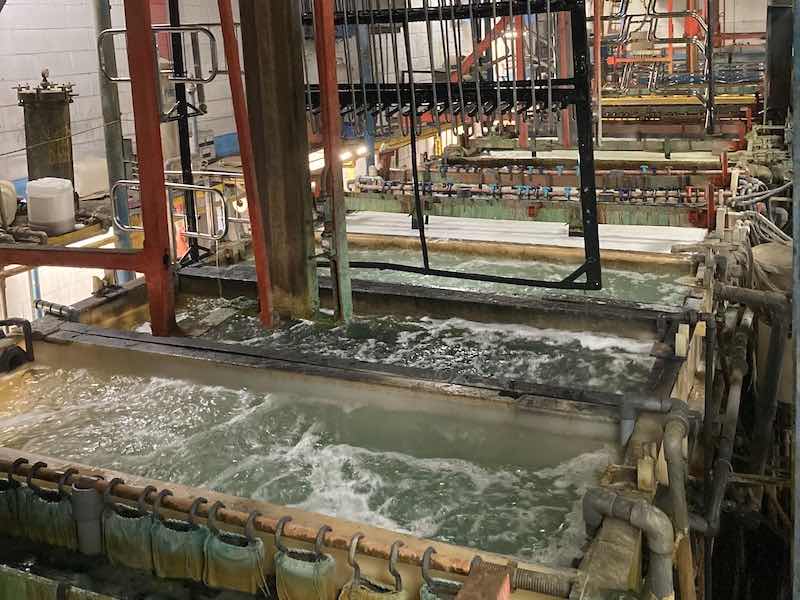Jaime Maliszewski is gifting himself an expensive Christmas present this year: a $600,000 renovated plating line.
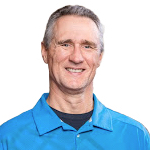 Jaime MaliszewskiThe president of Reliable Plating Works and Elite Finishing in Milwaukee is having one of his decorative chrome lines revamped during the upcoming Christmas break, adding new hoists, motors, and software to the line first installed in the early 1980s.
Jaime MaliszewskiThe president of Reliable Plating Works and Elite Finishing in Milwaukee is having one of his decorative chrome lines revamped during the upcoming Christmas break, adding new hoists, motors, and software to the line first installed in the early 1980s.
“We’re taking an old line, and we’re retrofitting it,” Maliszewski says. “We’re basically taking out all the hoists and replacing all the controls, but the tanks will stay the same.”
20% Improvement, 1-Year ROI
The good news: it will give them 20% more throughput and pay for itself in a year or so.
It’s one of four lines that RPW utilizes for its growing business — the company recently purchased a building next door to it to expand operations — that focuses on copper, electroless nickel, and nickel-chrome in bright, satin, duplex, triplex nickel, woods, and hexavalent. In pre-plate, they offer polishing, buffing, deburring, vibratory, plus design and engineering services.
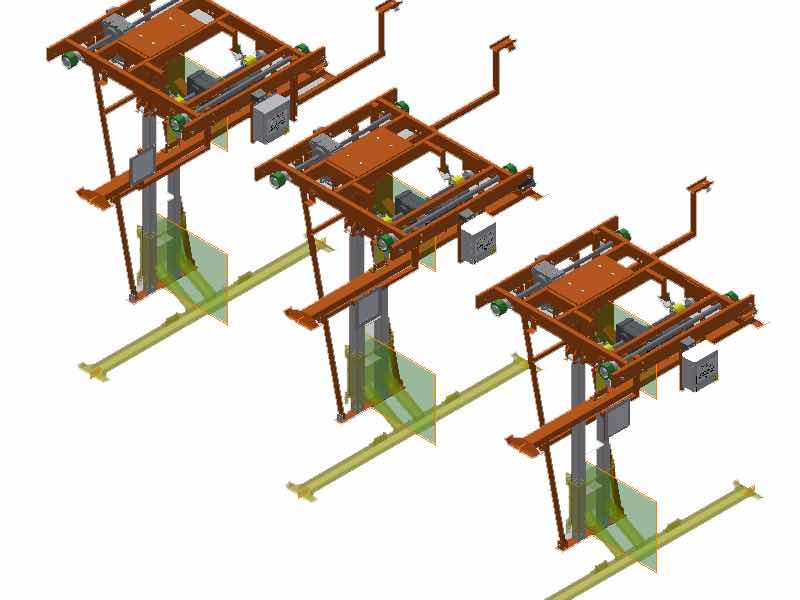 The new line Koch is designing includes laser locators to more accurately track load bars, as well as integrating variable speed motors rather than the two-speed motors RPW currently has.RPW employs over 80+ people at its facility, where it services several industries, including motorcycles, furniture, advertising displays, hardware, lawn and garden equipment, barbeques, paper dispensers, bicycles, appliances, and hand tools for clients such as Harley-Davidson, Master Lock, and Kohler.
The new line Koch is designing includes laser locators to more accurately track load bars, as well as integrating variable speed motors rather than the two-speed motors RPW currently has.RPW employs over 80+ people at its facility, where it services several industries, including motorcycles, furniture, advertising displays, hardware, lawn and garden equipment, barbeques, paper dispensers, bicycles, appliances, and hand tools for clients such as Harley-Davidson, Master Lock, and Kohler.
The line being rebuilt was last upgraded in 1999, and Maliszewski says it is time for a much-needed freshening up. They had hired Koch Finishing Systems to perform the rebuild, which had had a hand in the last seven machines RPW installed or upgraded going back to when Jessup maintained the system before Koch purchased the integrator.
“We want it to have more advanced systems and, to increase efficiency, and actually speed up the line a little bit, too,” Maliszewski says. “The breakdowns were happening more often, and we were making a lot of hand moves for new customers and new processes. We have to make some adjustments since the automation couldn’t handle it.”
Run Faster, Produce More Throughput
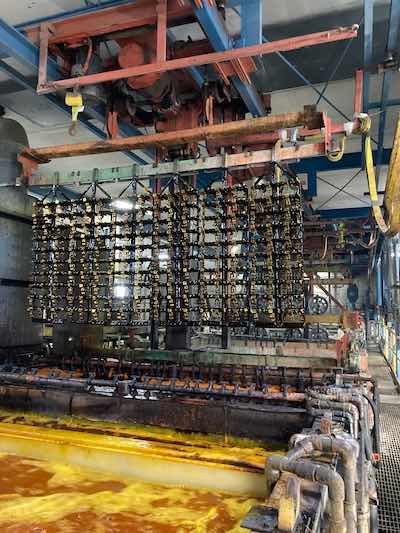 Maliszewski says when the line is upgraded, it will go from processing 10 bars an hour now to 12 bars an hour on this machine, or a 20% increase in throughput.RPW’s team sat down and reconfigured what the process should be on its plating line and produced a motion diagram for Koch to implement. The Koch engineers came back with some refined solutions that should make the system run faster and produce more throughput than before, all while being more efficient to operate.
Maliszewski says when the line is upgraded, it will go from processing 10 bars an hour now to 12 bars an hour on this machine, or a 20% increase in throughput.RPW’s team sat down and reconfigured what the process should be on its plating line and produced a motion diagram for Koch to implement. The Koch engineers came back with some refined solutions that should make the system run faster and produce more throughput than before, all while being more efficient to operate.
That includes adding laser locators to more accurately track load bars, as well as integrating variable speed motors rather than the two-speed motors they currently have. The upgraded line will also have self-tensioning cables for lift mode, plus the system will have wireless controllers.
“If something goes wrong, that operator doesn’t have to run to a location,” Maliszewski says. “He can have the controls right on him, and he can stop it, move it, or do whatever he has to if something happens up there.”
More importantly, Maliszewski says the line will go from processing 10 bars an hour now to 12 bars an hour on this machine, or a 20% increase in throughput.
“There’s a lot of things that were no-brainers for us,” he says. “It’s going to pay for itself in less than a year, probably.”
Modernizing Lines Pay Off
 Jeff DellachJeff Dellach, General Manager for Jessup Systems at Koch Finishing Systems, says that many shops have some form of automation on their lines but still should be modernized.
Jeff DellachJeff Dellach, General Manager for Jessup Systems at Koch Finishing Systems, says that many shops have some form of automation on their lines but still should be modernized.
“They have controls that rely on limit switches for positioning and for the transfer, and a lot of two-speed motor applications where it has maximum velocities,” Dellach says. “But you’re tapped out, and you can’t go any faster.”
The new line will have variable-frequency drive single-speed motors that he says generally cost the same as a two-speed, but the operator can get much better performance.
While tank immersion times are a big factor in what types of throughput improvements can be made, Dellach says they can make up time and improve cycles with better VFD controls.
“Whether it’s one, two, or three loads, every additional load per hour adds up,” he says. “And at the end of the week, it’s good money. When the light bulb goes on in our customer’s minds, and they realize, ‘Okay, yeah, maybe I’m spending more than I thought I would do this upgrade,’ that payback is there because they’re able to get more loads through with that equipment.”
Upgrading in Stages
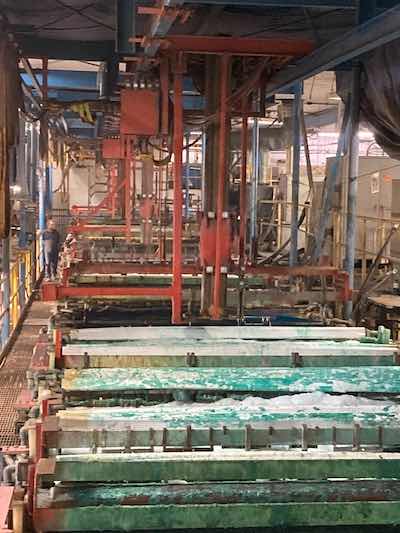 Maliszewski was worried about the downtime of upgrading the line, but much of the work could be done with the existing line still in operation. The new electrical work and system controls can be wired in or upgraded while the line operates, and he is planning to shut it down for the conversion over the Christmas break, which is usually when RPW and Elite go on hiatus anyway.
Maliszewski was worried about the downtime of upgrading the line, but much of the work could be done with the existing line still in operation. The new electrical work and system controls can be wired in or upgraded while the line operates, and he is planning to shut it down for the conversion over the Christmas break, which is usually when RPW and Elite go on hiatus anyway.
“What’s important for our customers is getting that equipment back online as quickly as you can, with minimal downtime,” Dellach says. “We’ll stage the installation in phases over a length of time, and we’ll get the control panel done and then stage-up electrical.”
He is anticipating two to three weeks when the line won’t be running while they are tearing out the old hoists, putting up the new ones, and connecting wires. Their startup crew will then need to commission the line and equipment and start loading the program’s runoff cycles.
“It’s a pretty aggressive timeline because Jaime wanted minimal downtime, which you can’t blame him,” Dellach says.
Variations of Decorative Chrome Plating
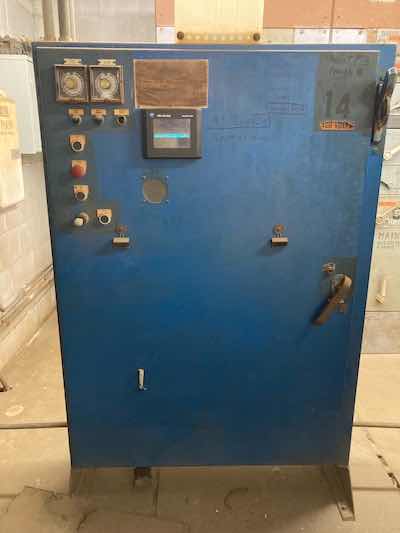 The upgraded line will also have self-tensioning cables for lift mode, plus the system will have wireless controllers.Maliszewski says the line does a variation of decorative chrome plating, some of what he calls the “dip and ship stuff,” which includes school cafeteria and low-end furniture, where customers just want a coating on it.
The upgraded line will also have self-tensioning cables for lift mode, plus the system will have wireless controllers.Maliszewski says the line does a variation of decorative chrome plating, some of what he calls the “dip and ship stuff,” which includes school cafeteria and low-end furniture, where customers just want a coating on it.
The line also handles their higher-end customers such as Harley-Davidson, Kohler faucets, and others that want “polish and perfect,” he says. Because the line has the ability to do both finishes at the same time, they can manage and pick when the parts are going into this line and adjust for these different types of processes.
But the new automated system will help RPW better maintain its variables when meeting both types of decorative chrome needs.
“Most people are doing that by having guys doing it by hand, but the variation depends on the guy,” Maliszewski says. “We can have all that variation programmed into the system, and we just hit a recipe button, and it’s going run that process for us. Every time that customer goes through, he’s going get the same process every time through the line. And that’s a big thing with us: we want to take out variability in all of our processes.”
Visit https://rpwinc.net and https://kochllc.com





